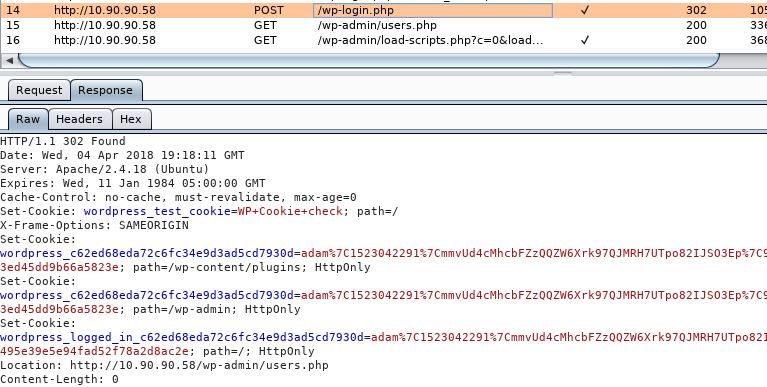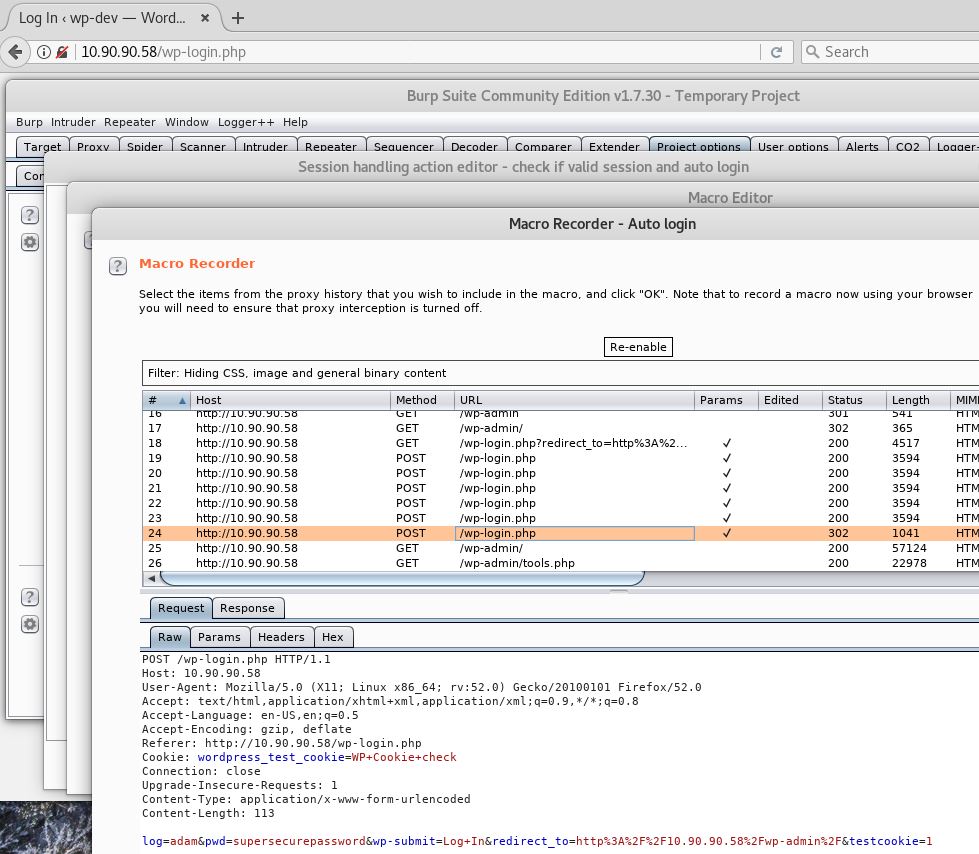In this post we will look at how we can use the Burp Suite’s Macro functionality to re establish a valid authenticated session on a website. Essentially creating a burp suite macro: Auto Login feature when we get logged off. One issue you may face when carrying out an authenticated web application assessments is as you carry out input validation testing on various parameters etc, you may get kicked out of your authenticated session or you no longer have a valid session for whatever reason and need to re-authenticate before you can continue. This is especially frustrating and common when running an active scan. To get around this issue we can set up some custom session handling rules to allow us to re-establish a valid session. This essentially tells Burp Suite to do something (ie login) based on a set of known conditions. For example we can create a login macro which is replaying the authentication post request to the server if a certain response condition is met on a regular request.
They say a picture speaks a thousand words so lets walk through an example. Or skip to the bottom where I demo in a video. In this example we will use our classic favourite WordPress to demonstrate. I should say that each web app is different and no one site/login will be the same, however this should give you an idea of what is achievable, (although understand this is just scraping the surface of what is possible 🙂 ).
Lets get started, if we authenticate to WordPress, we can see the following post request as normal. We will use this later in our macro.
…and the response:
Lets also look at what a invalid session response looks like if we logout and try to request http://10.90.90.58/wp-admin/users.php:
We now have a good understanding what our authentication request looks like. Pay close attention to the ‘Location:’ redirection header response, and the difference between both a valid session and invalid session looks like. For a valid session we see the redirection to …/wp-admin/users.php for an invalid session we see the response redirecting us back to wp-login.php. We will use this enumerate a valid session later on.
Lets move to ‘Project options’ then on the ‘Sessions’ tab click ‘Add’ under Session Handling. Give the rule a name/description. Then go to ‘Add’ and select ‘Check session is valid’ like below:
Here we are going to set the conditions, ie if this is present do this. In our case we want to identify an invalid session and if matches run a macro. So on the ‘Session handling action editor’ we can pretty much leave all the defaults as they are except for the string and macro action. However a quick run through of what we have selected is: we are basically saying; on every request if we get a redirect, look for the expression ‘wp-login.php’ match the type with a ‘Literal string’, the case is ‘insensitive’; if this is all true and matches its an ‘Invalid session’. Then ‘if session is invalid, perform the action below:’, select this box. This is where we would add our auto login macro function. The page should look like this:
The last set of instructions will vary from web app to web app and indeed you could modify the above to work differently and still be valid for WordPress. For example rather than looking for a redirect with the word ‘wp-login.php’ you could look for the expression ‘Hi, <span class=”display-name”>adam’ in the response body and match it as a valid session, ie if it doesn’t match this run the macro. We know the top banner will always have this in the response body in WordPress if logged in (obviously very specific to WordPress).
Equally we don’t necessarily need to validate the session we can just run the macro before each request, however this isn’t particularly efficient. The idea behind looking at the session state is to make the process as efficient as possible. This is the beauty about Burp Suite Macro’s they are very granular in what you can do, depending on what you are trying to achieve.
Now we are going to add our macro to auto login. Under ‘Select macro:’ on the same page click ‘Add’ and the macro editor will pop up like below:
Select ‘Record macro’ and select our post request which has the login like below:
At this point you can test the macro to see if it behaves in the correct way and also verify you have the right login creds. When ready select ‘OK’ on the ‘Macro Editor’ and ‘OK’ on the ‘Session handling action editor’.
On the ‘Session handling rule editor’ screen select the ‘scope’ tab and select ‘Proxy’ as we want to see this in action in Firefox for testing purposes, in addition to this select the appropriate ‘URL scope’, you may have already added this your scope target tab:
Lets give it a try. So from the wp-login.php page we can see we are unauthenticated, if we try to access http://10.90.90.58/wp-admin/users.php we immediately jump to an authenticated screen without having to manually login! Great!
If we leave the page long enough we get your session has expired, if we try to access the wp-admin page again, we auto login. Ace!
Ok, so lets backup slightly and verify what just happened. If we go back to burp we can use a handy feature called the ‘Session handling tracer’ to trace and troubleshoot the condition of the current request, to see if the session is valid or not valid and whether the macro has run or not run. Back on the ‘Project options’ page under ‘Sessions’ select ‘Open sessions tracer’ you should see the below:
Here we can navigate through the various request to see if the session is valid or not and if the macro has run of not.
Further to the above I have demonstrated this in the below video (sorry no audio this time, however you get the idea):
I hope this has been helpful!










